
International Seabed Authority Responds to Trump Plan
The International Seabed Authority has issued a statement following the announcement that deep-sea mining firm The Metals Co has asked the Trump administration to approve its plans to mine the international seabed.This would make it the first such company to seek the government's permission to operate outside U.S. territorial waters, and it comes after a US Executive order “Unleashing America’s Offshore Critical Minerals and Resources” which was issued on April 24.Leticia Reis de Carvalho Secretary-General of the International Seabed Authority, said: “The issuance of an
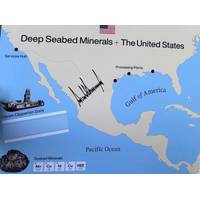
First Deep-Sea Mining Company Asks Trump for International Permit
.Last week President Donald Trump signed an order aiming to jumpstart mining in both domestic and international waters in an attempt to boost U.S. access to critical minerals and reduce China's market control.The move ratchets up tension between Washington and the United Nations-backed International Seabed Authority, which has been crafting mining standards for more than a decade, while China objected to the order as a violation of international law.Parts of the world's oceans are estimated to contain large amounts of potato-shaped rocks known as polymetallic nodules filled with the building
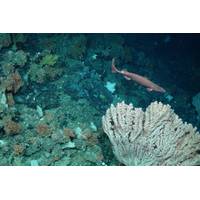
Concerns for Deep Sea Ecosystems Heighten as US Opens Opportunities For Mining and Extraction
In the same week as the US Government moved to accelerate offshore mining and open new opportunities for mineral extraction, a new reflection paper co-authored by PML Honorary Fellow Torsten Thiele urges the International Seabed Authority to declare a moratorium/precautionary pause on such activity.The paper, titled "Delivering Benefits to Humankind: Opportunities for the International Seabed Authority under a Deep-Sea Mining Moratorium," has been published by the Deep Sea Conservation Coalition (DSCC) and explores the “critical opportunities available to the International Seabed
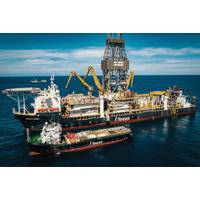
Trump Order Fast Tracks Subsea Mining
Resource Act of 1980 and to establish a process for issuing permits along the U.S. Outer Continental Shelf.It also orders the expedited review of seabed mining permits "in areas beyond the national jurisdiction," a move likely to spark friction with the international community.The International Seabed Authority - created by the United Nations Convention on the Law of the Sea, which the U.S. has not ratified - has for years been considering standards for deep-sea mining in international waters, although it has yet to formalize them due to unresolved differences over acceptable levels of dust

Impossible Metals Seeks Mining Lease Near American Samoa
a large claw that uses artificial intelligence to distinguish between nodules and aquatic life.Any country can allow deep-sea mining in its own territorial waters, roughly up to 200 nautical miles from shore.That means that California-based Impossible Metals does not need permission from the International Seabed Authority (ISA) - created by the United Nations Convention on the Law of the Sea, which the U.S. has not ratified.The White House is weighing an executive order to let mining companies that want to mine international waters bypass the ISA.(Reuters - Reporting by Ernest Scheyder; Editing by Sandra Maler

China Concerned About US Deep-Sea Metals Stockpile Plan
law, the seabed and its resources "are the common heritage of mankind.""Exploration and exploitation of mineral resources in the international seabed area must be conducted in accordance with the United Nations Convention on the Law of the Sea and within the framework of the International Seabed Authority," the ministry said in a statement.China produces around 90% of the world's refined rare earths, a group of 17 elements used across the defense, electric vehicle, clean energy and electronics industries. The U.S. imports much of its rare earths, which come largely from China
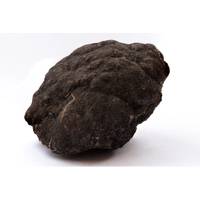
White House Could Bypass UN on Deep-Sea Mining
Donald Trump's latest attempt to tap international deposits of nickel, copper and other critical minerals used widely across the economy after recent efforts in Greenland and Ukraine. Trump earlier this month also invoked emergency powers to boost domestic minerals production.The International Seabed Authority - created by the United Nations Convention on the Law of the Sea, which the U.S. has not ratified - has for years been considering standards for deep-sea mining in international waters, although it has yet to formalize them due to unresolved differences over acceptable levels of dust

ISA Elects Secretary General as Calls Grow to Pause Deep-Sea Mining
The International Seabed Authority (ISA) has elected Leticia Carvalho of Brazil as its next secretary general, as pressure mounts for a pause on efforts to mine the sea floor for minerals for use in the energy transition.Carvalho replaces two-term incumbent Michael Lodge, the ISA said in a statement on Friday. Her four-year term as head of the United Nations-mandated body that regulates sea-floor mining will start in 2025.The appointment of Carvalho, who formerly worked for Brazil's oil regulator, could trigger a change in approach at the ISA.Carvalho told The Guardian last month that rules
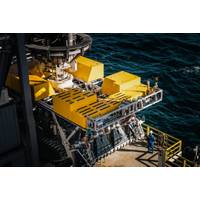
Canada's TMC to Seek Seabed Mining License in 2024
mining could have a catastrophic impact on marine ecosystems and should be delayed at least until the ocean environment is better understood and proper safeguards are in place.TMC said on Tuesday that its subsidiary, Nauru Ocean Resources Inc. (NORI), intended to submit an application to the International Seabed Authority (ISA) after the global regulator meets in July next year."Assuming a one-year review process, NORI expects to be in production in the fourth quarter of 2025," it said.The company was originally expected to submit an application this year after Nauru, its sponsoring country,
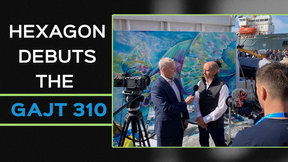
 February 2025
February 2025





